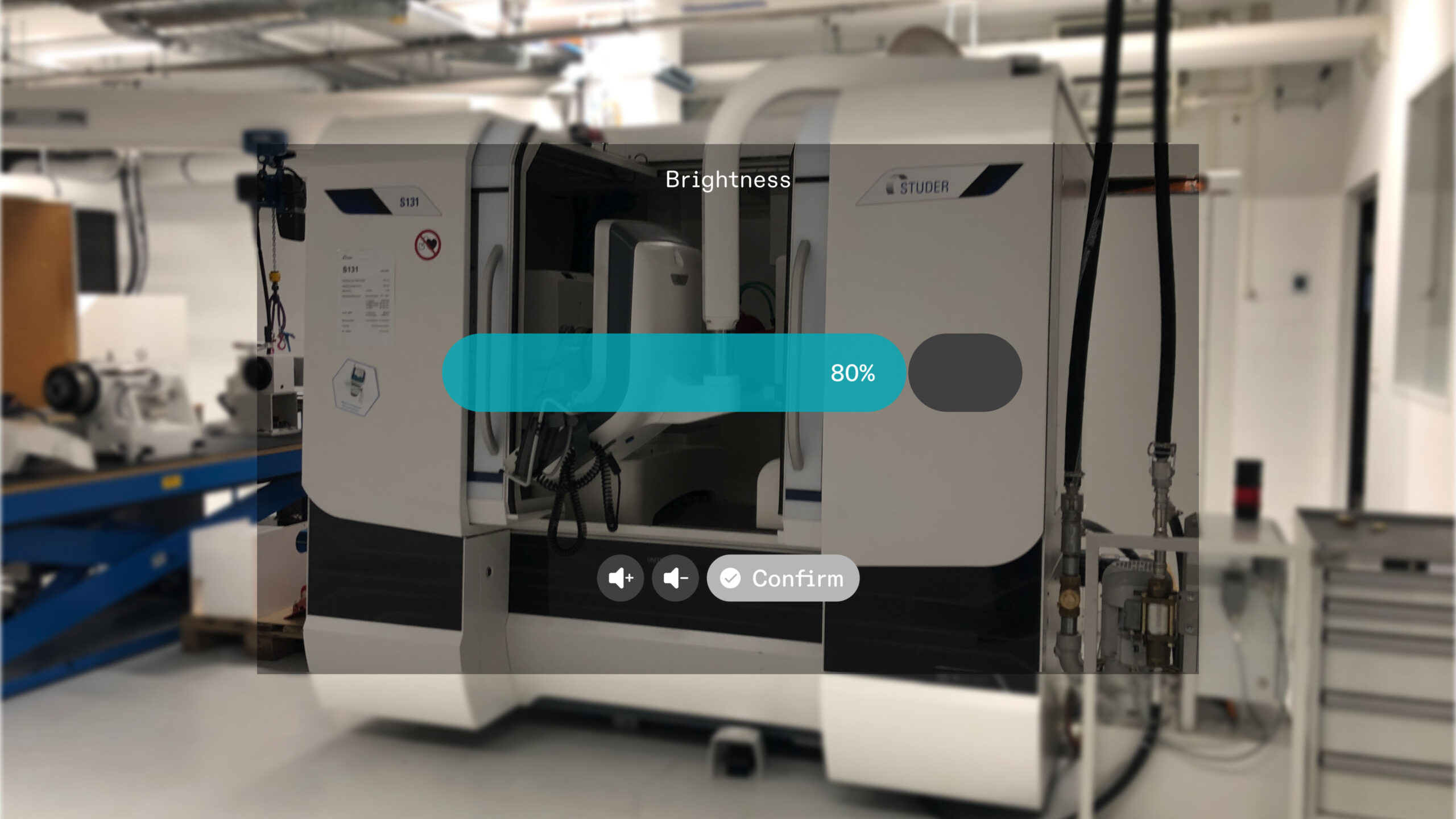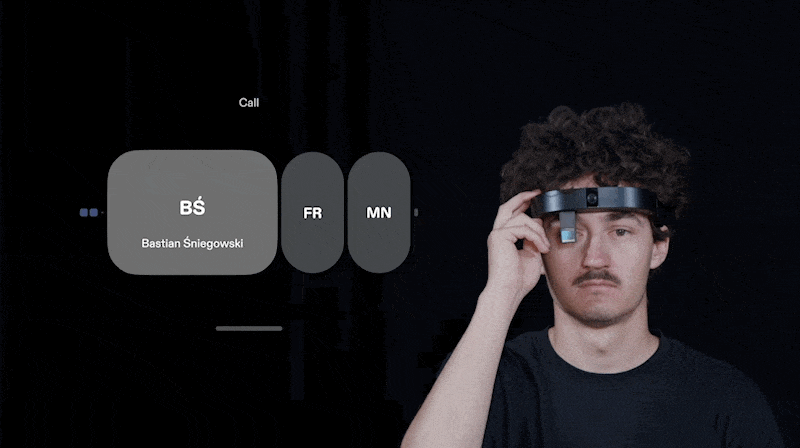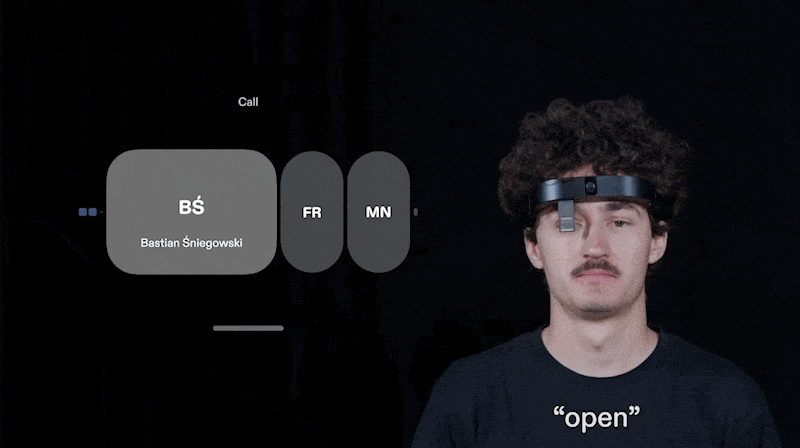AR User Interface
Designed an intuitive AR interface for the Almer Arc, a lightweight AR headset by Almer Technologies. My role involved creating an easy to navigate user experience that enables calling and interacting in augmented reality.
Services
Product Design, UX Research, Interaction Design
Company
Almer Technologies
Platform
AR headset, Almer Arc
Timeframe
Nov 2022 - Jun 2023

1 ––
Background
The Almer Arc 2 is an augmented reality headset with a mono-sided display for the right eye. My role was to draft a UX concept, conduct UX research and design an intuitive interface, controllable via three buttons and voice commands. Set for a 2024 release, it's geared for industrial remote assistance.
*To respect my non-disclosure agreement, I have limited the selection of work displayed.
2 ––
The Problems
– The one-sided display limits the user interface to a single eye, which can feel unusual for most users.
– Users have limited or no experience with augmented reality and often lack potential interaction knowledge.
3 ––
User Testing
We conducted multiple rounds of testing with various individuals, with a special focus on individuals aged 40 and above.

4 ––
User Interface Design
While iterating with text sizes, colors, and animations, I developed a user interface that first lets users view the real world undistracted, and second provides only essential contextual information to reduce simultaneous interactions.
Designing a UI for spatial context in 2D within Figma was a unique task. Therefore, I consistently wore the headset while designing and testing the UI outdoors or in factories. The design is set to launch in the final product in early 2024, with minor refinements ongoing.



5 ––
Interaction
Concepts
In the approach to interacting with the AR headset, I tested different methods using the headset's integrated buttons and voice commands via the microphone. Our team also tried head movements as an interaction option using a gyroscope but later opted against it.



6 ––
Learnings
– As the sole designer in the company, I worked independently on this design project, while collaborating closely with the software and hardware engineering teams. Iterative testing was therefore crucial for refining the interface and addressing open questions surrounding AR technology.
– A black canvas enabled transparent UI using unilluminated OLED pixels, requiring adaption of traditional design guidelines.
– Testing discovered that centering critical information and controls in the middle of the headset’s display area created the perception of a wider field.